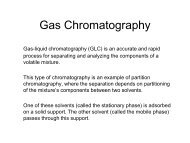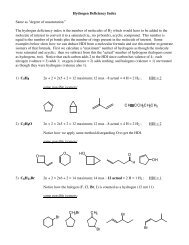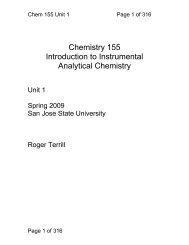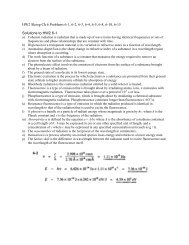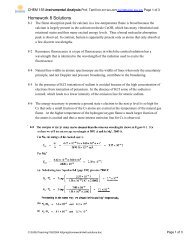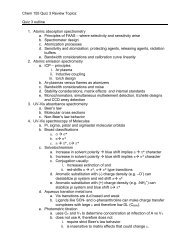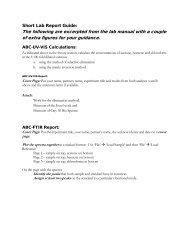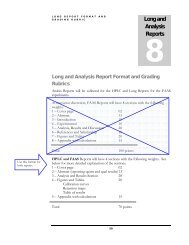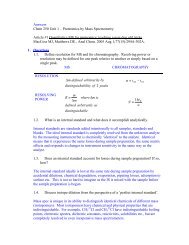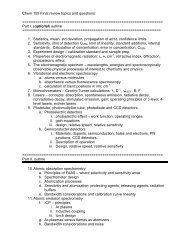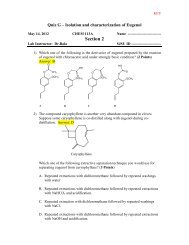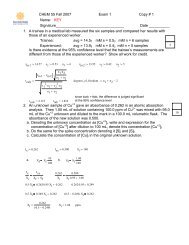Chemistry 155 Introduction to Instrumental Analytical Chemistry
Chemistry 155 Introduction to Instrumental Analytical Chemistry
Chemistry 155 Introduction to Instrumental Analytical Chemistry
Create successful ePaper yourself
Turn your PDF publications into a flip-book with our unique Google optimized e-Paper software.
Chem <strong>155</strong> Unit 1 Page 44 of 313In general validation of an analysis is done usingsome kind of independent analysis of the sample.• For the purposes of this class, if the two methodsagree (t-test does not show a difference) then themethod is said <strong>to</strong> be validated.• If the two methods disagree (i.e. there isevidence of bias), then there is evidence forsystematic error like a matrix effect, aninterferant, or a mistake in the preparation ofstandards or samples.If an analysis is repeated as described below, whataspects of the analysis are validated (i.e. what musthave been ‘good’ for the answers <strong>to</strong> have come outthe same)?Validation ApproachCompletely independentmeasurements of thesame sample using adifferent instrument ortechnique.Use the same method,but measureindependently preparedstandards as samples.Aspect(s) validatedCalibration method,including matrix effects.Instrument, includingdis<strong>to</strong>rtion and drift.You! The analyst, did itrightYou! The analyst made nomistakes in theimplementation of theprocedure.Page 44 of 313



